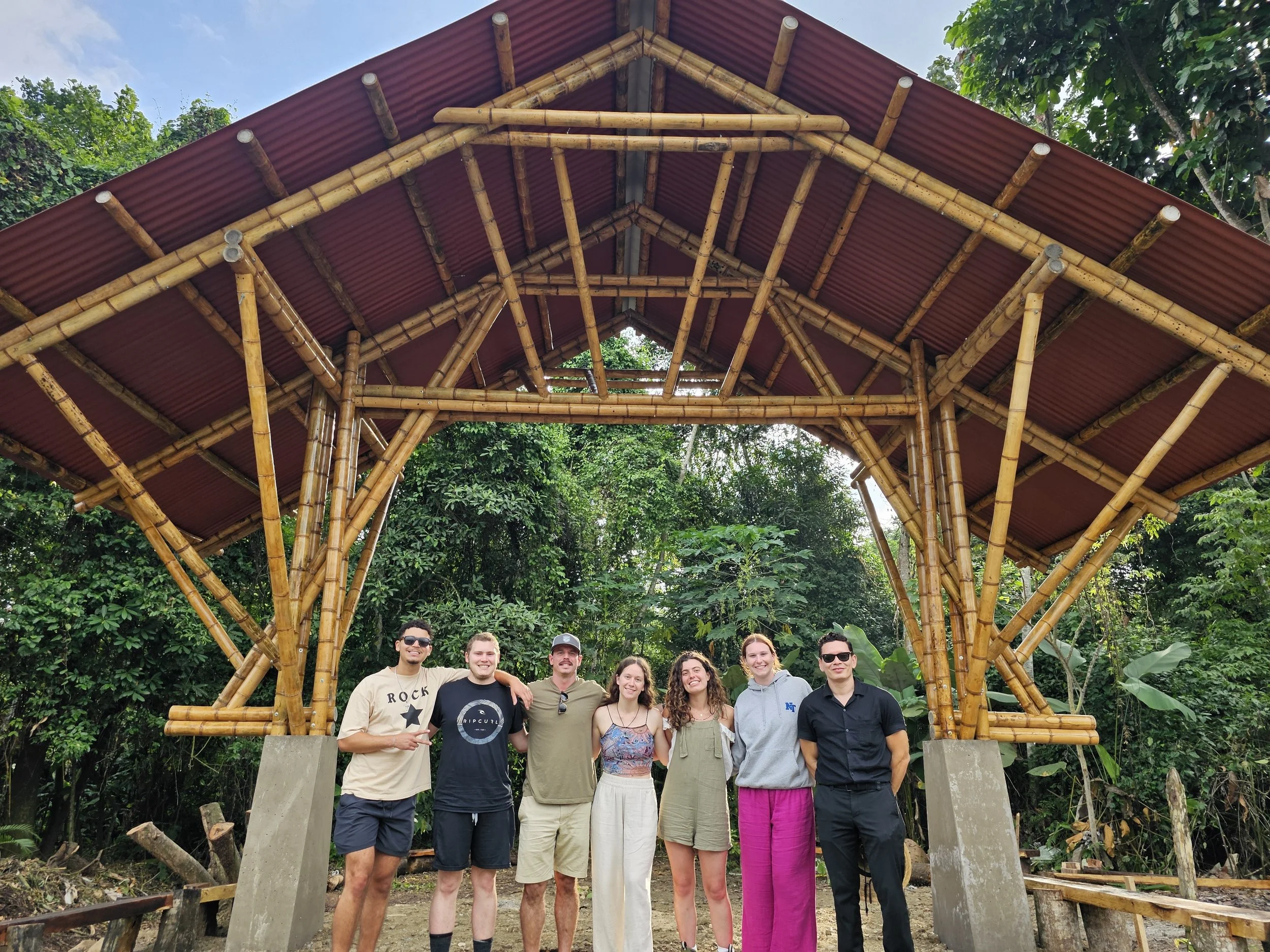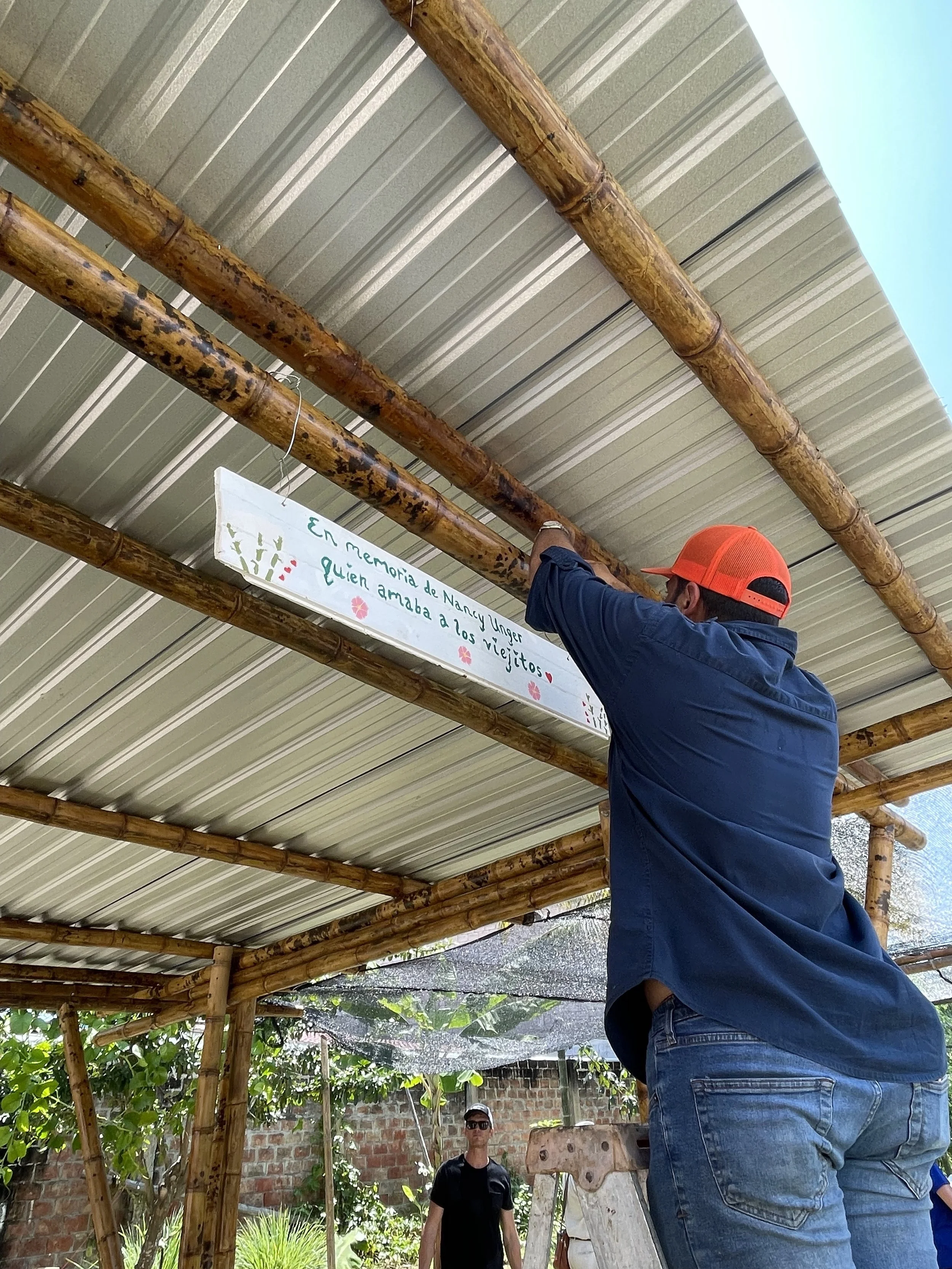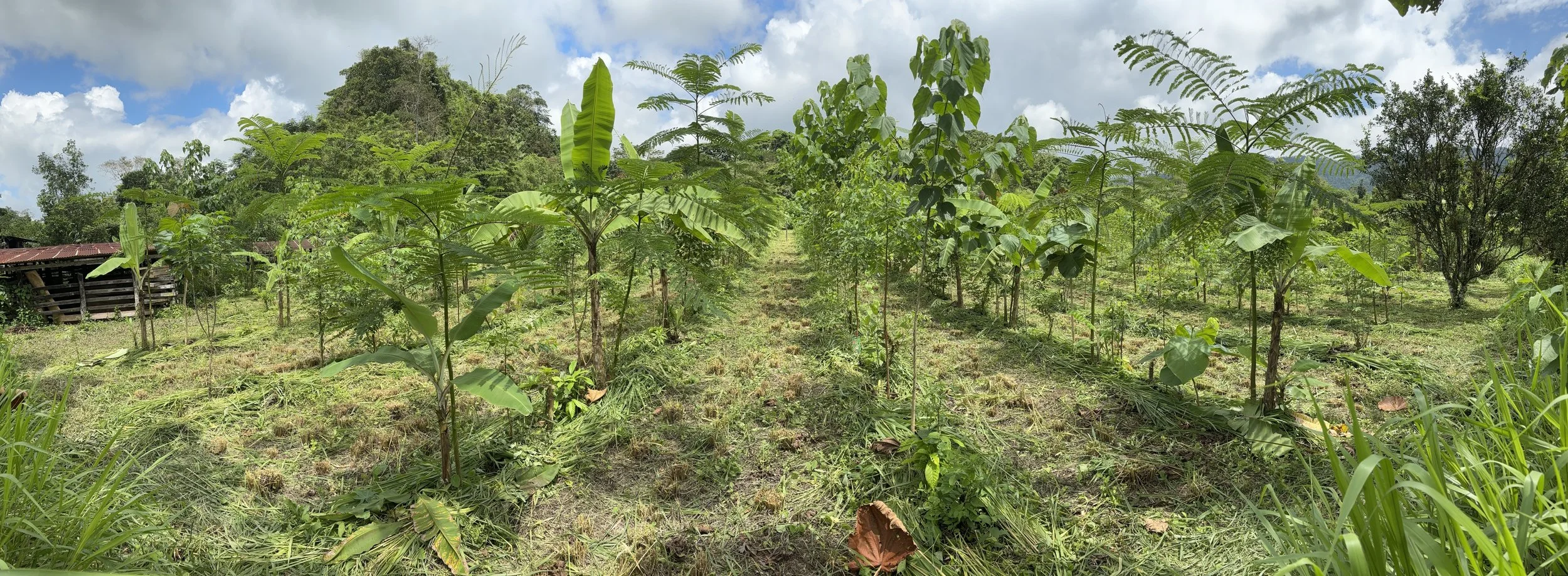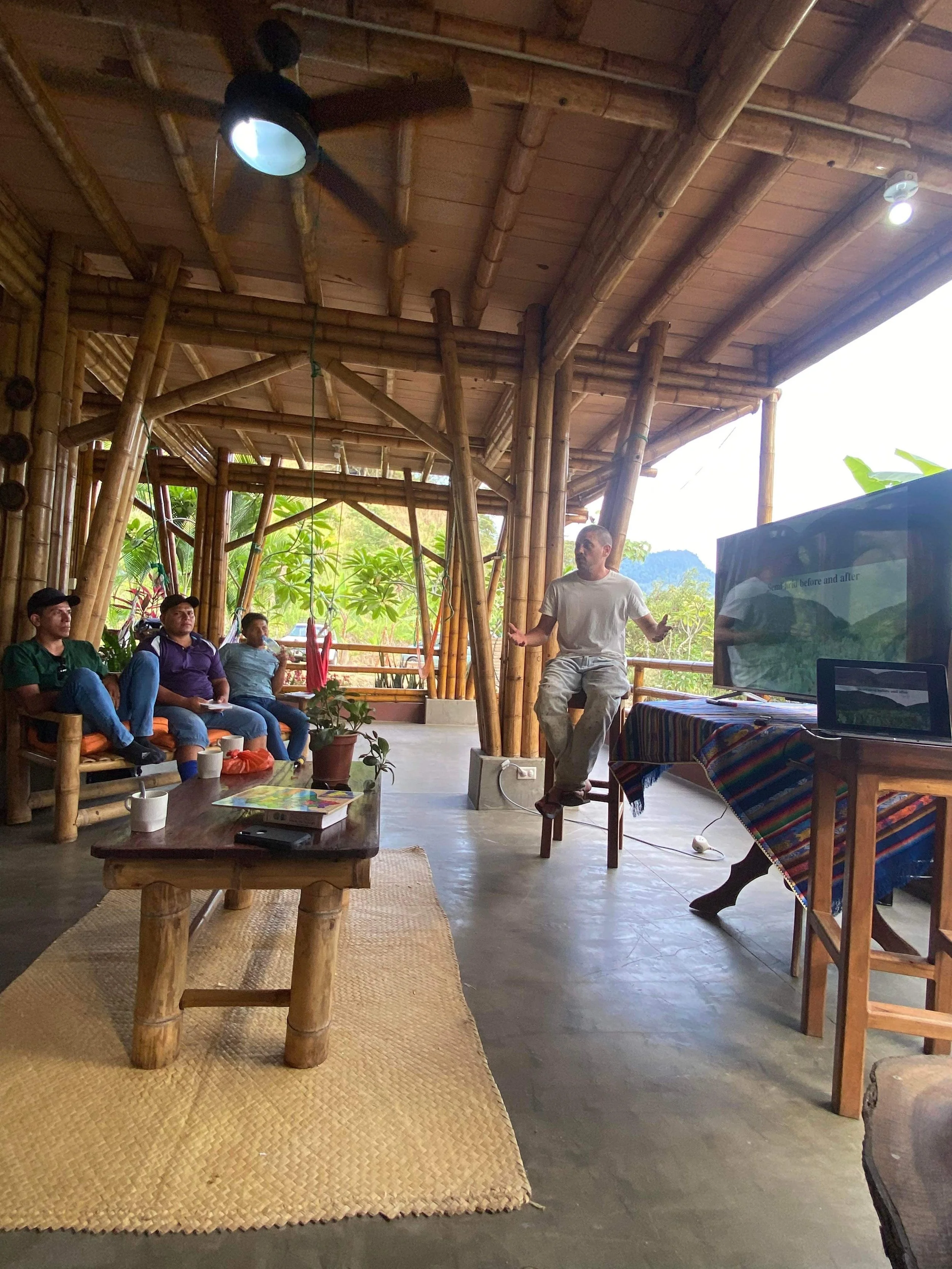Isabelle Neve is a student at the University of Vermont studying Environmental Studies and Food Systems with a minor in Agroecology. Isabelle is originally from Minnesota and passionate about sustainability and understanding agriculture's role in climate change. She joined an RFI program in March 2024 and then served as a campus leader at UVM to organize a trip for more students to get involved. Below is her written account of her experience on an RFI program in March 2024.
Last year during Spring Break, I went on an RFI trip with students from the University of Vermont and with students from Kansas University. As all groups that work with RFI do, we helped in the construction of a local bamboo project. Our project was a small stand for a man who sells juice, providing him with a place to sit, put his cooler, and get out of the sun or rain. We also learned about the syntropic agroforestry systems that RFI utilizes, as well as many other small-scale projects around the farm to restore the ecosystem of the land on which the farm is built. These jobs were exactly what sold me on this program when some fellow students gave a presentation about the program to my Intro to Environmental Studies class. And while on paper these experiences can be wrapped up into a few sentences, the lasting impact they hold on students can be hard to convey.
Before I wrote this I decided to flip through some pictures from our trip last spring break. I found myself shocked remembering how much we actually packed into each day. The very last day had some of my favorite memories from the whole week and touched on so many different parts of the work that RFI does.
The day started with a typical morning routine, it was probably around 8 when we were woken up for the day, if the howler monkeys had not already woke us up. We got ready for the day and then headed downstairs to eat breakfast together. After many plantains, eggs, avocados, and plenty of fresh juice, we all headed out to finish up our bamboo project. This included sanding and finishing some of the bamboo, as well as planting two trees on either side of the structure for more shade. After doing some good work on the structure, we returned to RFI headquarters for lunch and some rest time. We then split into groups, some of us staying to finish the structure and the rest of us went back to finish the compost we were building.
Working on some of the final touches on our bamboo project.
This style of compost is known as the Johnson-Su Bioreactor. We worked to assemble one of these over our week at RFI. We cut the bamboo that we had harvested from the farm to make the base (replacing a pallet that is typically used, because we use what we have!). We pounded the stick into the ground and wrapped and secured the structure with wire. We then walked around a forested section of the farm collecting brown and green matter to fill the compost with. I also had the chance to head into the forest with Beth, RFI’s program director, to find some mycelium under the forest floor to add to help kickstart the composing process, with a short sidequest to try and spot some monkeys. We then drenched the compost in water, and began the long process of waiting for it to become beautiful nutritious soil! This project was so interesting to me because it was a different style of composting that I hadn't heard about before, and it was so much fun to be able to be a part of building one from start to finish.
Putting in the final green and brown matter! into the Johnson-Su Bioreactor.
After finishing up the composting project we then moved on to working with some composting practices! We went and collected some manure from the cows, shoveling it into big bags and then hauling it to one of the syntropic agroforestry plots. RFI has a few different syntropic plots, all at varying stages of growth. After some quick instruction, we then split into pairs and began to lay the manure around the banana trees, careful to avoid any of the other plants so we didn't overwhelm them with the excess nutrients. In these syntropic plots, there are many varieties of trees, bananas as I mentioned, as well as eucalyptus, cacao, and many others. I remember it being so hot and sunny while we were doing this, and I had opted out of using gloves so my hands were covered with soil and manure, and man was I having fun. I paired up with Lydia, a senior from Kansas University who was quickly becoming a good friend over this week. We spent the next hour tending to the small banana plants with this manure, talking about our favorite parts of the week, and our lives back home. While we did this Kelly, a local cattle rancher and RFI employee, walked through the lines with a machete clearing any unwanted brush and the tops of some banana trees to help support new growth– seriously these banana plants were getting a spa day. While he did this he would point out details about the plants, their stages of growth, how the fruit they were producing was looking, and at what stage they would look at harvesting (side note: All of the bananas and plantains eaten on this trip were harvested from these syntropic plots and around the farm!). While doing this Kelly spotted a bunch of plantains that were ready to harvest, and he let me use the machete to harvest it!
Me with the plantains I harvested!
Later that night when reflecting as a group on our favorite parts of the trip I explained the impact that this full-circle experience had. Being hot and sweaty and carefully, with love, giving nutrients to these trees, learning about them and the role they play in this system, and then being able to harvest a bundle and carry it back to the house to be eaten. It felt like such a culmination of the work that RFI is doing, of all I had learned during this trip, and what I am learning about at the University of Vermont. It was such a beautiful feeling, one that I carry with me to this day.
We shared a final meal, pizzas were made in RFI’s beautiful wood-fired pizza oven. We all sat at the long table together and shared highlights from the day in English and Spanish while passing juice up and down the table. After we hiked up to the lookout over the farm to watch the sunset together. We ate cacao and tried to see who could spit their seeds the furthest. We laughed and shared memories from the past week while we soaked up the last of the sun and marveled at the beauty of this place—the perfect ending to a perfect last day.
Watching the sunset on our last day at RFI.
This day encapsulated some of the best parts of RFI and is one I reflect on often when I look back on this first trip to Ecuador. I am so grateful to get to return to Ecuador again this spring break with a new group of students, all immensely excited to get to be a part of this program. The projects and people at RFI are steeped in amazing aspirations and care for this community and the world at large. And I know many more students with continue to be deeply impacted while being a part of these programs.
















































